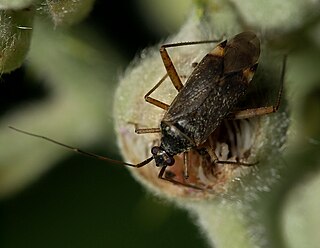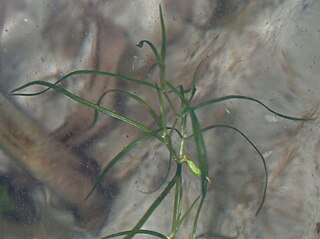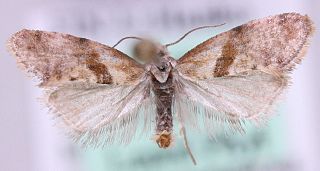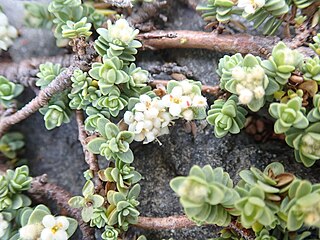
Malta, officially known as the Republic of Malta, is an island country of the European Union consisting of an archipelago in the Mediterranean Sea, and considered part of Southern Europe. It lies 80 km (50 mi) south of Sicily (Italy), 284 km (176 mi) east of Tunisia, and 333 km (207 mi) north of Libya. The official languages are Maltese and English, and 66% of the current Maltese population is at least conversational in the Italian language.

Anacamptis pyramidalis, the pyramidal orchid, is a perennial herbaceous plant belonging to the genus Anacamptis of the family Orchidaceae. The scientific name Anacamptis derives from Greek ανακάμτειν 'anakamptein' meaning 'bend forward', while the Latin name pyramidalis refers to the pyramidal form of the inflorescence.

Chamomile or camomile, is the common name for several daisy-like plants of the family Asteraceae. Two of the species, Matricaria recutita, and Anthemis nobilis are commonly used to make herbal infusions for beverages. There is insufficient scientific evidence that consuming chamomile in foods or beverages has any beneficial effect on health.

Cota tinctoria, the golden marguerite, yellow chamomile, or oxeye chamomile, is a species of perennial flowering plant in the sunflower family. Other common names include dyer's chamomile, Boston daisy, and Paris daisy. In horticulture this plant is still widely referred to by its synonym Anthemis tinctoria.

Anthemis is a genus of aromatic flowering plants in the family Asteraceae, closely related to Chamaemelum, and like that genus, known by the common name chamomile; some species are also called dog-fennel or mayweed. Anthemis are native to the Mediterranean region and southwest Asia east to Iran. A number of species have also become naturalized in the United Kingdom and other parts of the world.

Anthemis cotula, also known as stinking chamomile, is a flowering annual plant with a noticeable and strong odor. The odor is often considered unpleasant, and it is from this that it gains the common epithet "stinking". In pre-colonial times, its distribution was limited to the Old Continent and Africa; though it was established in most of Europe, it was not present in Finland, Ireland, or the northernmost reaches of Scotland, in spite of the fact that these countries feature climatic regions favorable to this plant and are in proximity to countries where the species is native, such as Russia, Estonia, Lithuania and England. It has successfully migrated to the New Europes where it can be found growing in meadows, alongside roads, and in fields.

Anthemis arvensis, also known as corn chamomile, mayweed, scentless chamomile, or field chamomile is a species of flowering plant in the genus Anthemis, in the aster family. It is used as an ornamental plant.
Typical flora of Malta consist of the following plants. While small compared to other countries, the Maltese Islands contain flowers that grow on Malta, Gozo, Comino, Filfla, St Paul's Islands and Fungus Rock. Many of the species are endemic to Malta.

Anthemis glaberrima is a species of flowering plant in the family Asteraceae. It is found only in Greece. Its natural habitats are rocky shores and Mediterranean-type shrubby vegetation.

Anacyclus clavata also known as Camomilla tomentosa, Pusteni targok, vit bertram, white anacyclus and white buttons is a member of the genus Anacyclus and the tribe Anthemideae and family Asteraceae.

Aethes smeathmanniana, or Smeathmann's aethes moth, is a moth of the family Tortricidae. It was described by Johan Christian Fabricius in 1781. It is found in most of Europe, Asia Minor and in North America, where it has been recorded from New Jersey and Newfoundland and Labrador.

Closterotomus fulvomaculatus is a species of plant bugs of the family Miridae, subfamily Mirinae.

Zannichellia major or Greater Horned Pondweed is a plant found in fresh to brackish waters in Europe.

Cochylidia implicitana, the chamomile conch, is a moth of the family Tortricidae. It was described by Wocke in 1856. It is found in most of Europe, except Ireland and most of the Balkan Peninsula. Outside of Europe, it is found in Morocco, the Alatau mountains in Central Asia, Iran and China (Xinjiang). The habitat consists of waste ground and verges.
Cannabis in Malta is legal, within limits. In 2018, Malta legalized medical cannabis. On 14 December 2021, Malta legalized recreational cannabis for personal use, becoming the first EU country to do so.

Pimelea urvilleana is a ground spreading shrub in the Thymelaeaceae family. There are two intraspecifics: Pimelea urvilleana subsp. nesica, and Pimelea urvilleana subsp. urvilleana.

Anthemis punctata, called the Sicilian chamomile, is a species of flowering plant in the genus Anthemis, native to Algeria and Tunisia, and introduced to Sicily, Great Britain and Ireland. It has gained the Royal Horticultural Society's Award of Garden Merit as Anthemis punctata subsp. cupaniana, which may well refer to Anthemis cupaniana.

Anthemis cupaniana, called the Sicilian chamomile, is a species of flowering plant in the genus Anthemis, native to Sicily, and introduced to Great Britain and the Chatham Islands. It may have gained the Royal Horticultural Society's Award of Garden Merit as Anthemis punctata subsp. cupaniana, which may well refer to Anthemis punctata.

Anthemis cretica, the Cretian mat daisy or white mat chamomile, is a species of flowering plant in the family Asteraceae, native to the Balkan Peninsula, Turkey and Iran. It is highly morphologically variable and the namesake of a species complex, and in spite of its specific epithet, it has not been confirmed to occur in Crete.
Zannichellia melitensis is a species of plant in the family Potamogetonaceae. It is endemic to Malta.

















